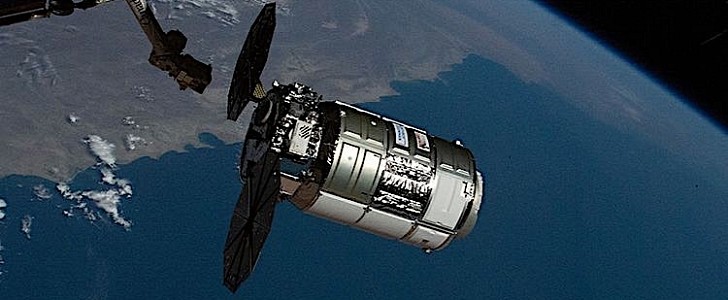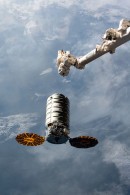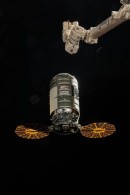Common sense will tell you a spacecraft is tasked with performing most of its missions while on the way up, not down. For instance, if a spaceship is heading to the International Space Station (ISS) with cargo but also has some satellites to release in orbit, it will probably do so before it reaches the station, right?
Well, common sense would be wrong, as another Northrop Grumman Cygnus spaceship will prove, once more, over the coming days. The ship reached the station back in February, carrying with it about 8,000 pounds (3,630 kg) of scientific research, supplies, and equipment for the astronauts on board. It also transported two small satellites of the CubeSat family up there.
It didn’t deploy them on the way up, but it will do so over the next three days, as it is moving away from the ISS for what Northrop Grumman calls destructive re-entry.
Cygnus left the International Space Station on Tuesday, June 29. It continues to carry 8,000 pounds of cargo, only this time they are not supplies but “disposable cargo" from the station, which will burn into the atmosphere together with the ship once the descent begins later in the week.
Before that happens, though, the ship will release two CubeSats into Earth’s orbit. The first is aptly called IT-SPINS, which is short for the not-so-aptly Ionosphere Thermosphere Scanning Photometer for Ion-Neutral Studies. It will be used for researching the planet’s ionosphere.
The second, called Dhabisat, has been developed by the Khalifa University in Abu Dhabi, United Arab Emirates, with the goal of training graduate students “through the development and evaluation of its software.”
Northrop Grumman does not say precisely when the Cygnus, named Katherine Johnson after the NASA mathematician who calculated orbital mechanics, will be completing its tasks and heading to its doom. Still, it should happen sometime over the next three days.
It didn’t deploy them on the way up, but it will do so over the next three days, as it is moving away from the ISS for what Northrop Grumman calls destructive re-entry.
Cygnus left the International Space Station on Tuesday, June 29. It continues to carry 8,000 pounds of cargo, only this time they are not supplies but “disposable cargo" from the station, which will burn into the atmosphere together with the ship once the descent begins later in the week.
Before that happens, though, the ship will release two CubeSats into Earth’s orbit. The first is aptly called IT-SPINS, which is short for the not-so-aptly Ionosphere Thermosphere Scanning Photometer for Ion-Neutral Studies. It will be used for researching the planet’s ionosphere.
The second, called Dhabisat, has been developed by the Khalifa University in Abu Dhabi, United Arab Emirates, with the goal of training graduate students “through the development and evaluation of its software.”
Northrop Grumman does not say precisely when the Cygnus, named Katherine Johnson after the NASA mathematician who calculated orbital mechanics, will be completing its tasks and heading to its doom. Still, it should happen sometime over the next three days.





